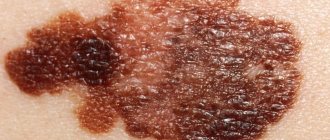Wegener's granulomatosis (another name for the disease is granulomatosis with polyangiitis) is an autoimmune pathology accompanied by inflammation of the walls of blood vessels (vasculitis). The smallest and medium-sized vessels are affected - capillaries, arteries, arterioles, venules.
In this case, internal organs are involved in the abnormal process - liver, kidneys, respiratory tract, organs of vision. Pathology tends to progress quickly. In the absence of proper drug exposure, death occurs within 1 year.
Etiology and pathogenesis, pathological anatomy, types of the disease and features of the course, clinical manifestations, diagnostic studies and options for conservative therapy are detailed in the article.
Description and statistics
Wegener's granulomatosis is a systemic chronic vasculitis, which is characterized by the formation of granulomas in the walls of small veins, arteries and blood vessels , as well as surrounding tissues of the lungs, kidneys and other organs.
It was first described and isolated from a series of vasculitis into a separate disease in 1936 by the famous German physician Friedrich Wegener.
The prevalence of the disease is 3-12 cases per 1 million people, but according to some data, over the past 30 years these numbers have increased approximately 4 times. Men are more susceptible to developing it than women , and the average age of patients is about 40 years. Children under 10 years of age are most rarely affected by Wegener's disease.
Treatment of Wegener's granulomatosis
The main treatment for Wegener's granulomatosis is immunosuppressive therapy, which is carried out with a combination of cyclophosphamide and prednisolone. As the patient's condition improves, their dosage is gradually reduced until completely discontinued. After this, the patient is prescribed methotrexate for a long course (1.5-2 years).
For Wegener's granulomatosis, Methotrexate is indicated for a long course of up to 2 years.
In the treatment of the generalized form of Wegener's granulomatosis, extracorporeal hemocorrection methods are used:
- extracorporeal pharmacotherapy;
- cascade plasma filtration;
- plasmapheresis;
- cryoapheresis.
Causes and risk factors
The exact etiology of the disease has not yet been established . According to research, it most often occurs in people who have previously experienced respiratory tract infections, but doctors do not rule out a connection between the inflammatory process and harmful microorganisms and other agents.
Immune complexes were found in the blood of some patients diagnosed with Wegener's granulomatosis, but their role in the pathogenesis of this form of vasculitis has not yet been proven.
Studies have also revealed the presence of antigens B8, HLA B7, DR2, antibodies to the cytoplasm of neutrophils and carriage of Staphylococcus aureus in the nasopharynx - presumably these factors act as catalysts for the development of the disease or its relapse. In addition, granulomas with multinucleated giant cells may be a manifestation of a delayed allergic reaction or the body's reaction to foreign bodies.
Causes
Currently, the exact cause of Wegener's granulomatosis remains unknown.
However, given the characteristics of the disease, it is believed that it may be of autoimmune origin. Autoimmune diseases are all those diseases that are characterized by an exaggerated and abnormal response of the immune system; While the immune system in a healthy person is the body's protective barrier against external aggressions (bacteria, viruses, etc.), in people with autoimmune diseases, the immune system mistakenly attacks healthy tissues of the body.
Genetics and environment
According to some theories (but so far without any evidence), it seems that in order to provoke an exaggerated autoimmune response, the simultaneous presence of two factors , one genetic and the other environmental, must be present.
A genetic factor refers to the predisposition of a sick person to develop Wegener's granulomatosis.
An environmental factor refers to an infection caused by a viral or bacterial agent (in particular, the etiological agent still remains unknown).
In the absence of any of these factors, the disease does not occur.
Classification
Depending on the location of the pathological process, it is customary to distinguish three main forms of the disease:
- local is characterized by isolated damage to the upper respiratory tract, hearing or vision;
- in a limited form, in addition to the above organs, the lungs are involved in the process;
- generalized Wegener's granulomatosis includes multiple internal lesions with obligatory involvement of the kidneys.
In addition, its clinical course has four stages:
- Stage I , or granulomatous-necrotizing vasculitis. Occurs with manifestations of purulent-necrotic or ulcerative-necrotic rhinosinusitis, nasopharyngitis and laryngitis, as well as with destructive changes in the tissues of the nasal septum and orbits;
- Stage II , or pulmonary vasculitis. At this stage, the inflammatory process affects the lung parenchyma;
- Stage III , or generalized vasculitis. At the third stage of the disease, patients experience multiple lesions, which are localized in the lower respiratory tract, gastrointestinal tract, kidneys, as well as in blood vessels and arteries.
- IV, or terminal stage . The fourth stage of the disease causes pulmonary-cardiac or renal failure, which leads to the death of the patient within a year.
Etiology and classification
Despite the development of modern medicine, doctors do not know the exact cause of the disease. Many scientists are of the opinion that the hereditary factor plays a dominant role in its occurrence.
It is also known that people who have suffered any infection are more likely to develop a pathological process. A connection between pathogenic microorganisms and the occurrence of systemic necrotizing vasculitis cannot be ruled out.
Medical specialists know for sure that most often the disease is diagnosed in people who have a history of viral hepatitis B or C or HIV infection. Therefore, it can be assumed that the disease may be a consequence of a decrease in immune status.
Predisposing factors for the occurrence of Wegener's granulomatosis:
- A severe allergic reaction, which was treated with high dosages of antihistamines over a long period of time.
- Long-term use of medications to treat tuberculous damage to the liver or other organ.
- Use of chemotherapy drugs.
- Severe form of rhinovirus or adenovirus.
- Uncontrolled use of immunomodulating agents.
Doctors believe that genetic predisposition is one of the main factors. If the disease is at the genetic level, then in the presence of a provoking factor it will certainly manifest itself.
Pathomorphology and histogenesis
The main morphological substrate of the pathology is granuloma, which is a zone of tissue death surrounded by an accumulation of blood and lymph particles.
The granuloma contains particles of neutrophils, plasma cells, lymphocytes, and eosinophils.
Against the background of Wegener's granulomatosis, the inflammatory process is localized directly in the vascular walls. During the development of the disease, three stages can be observed, which replace each other sequentially:
- Alteration stage.
- Exudation stage.
- Proliferation stage.
This leads to destruction of the vascular wall, the formation of an aneurysm, which leads to hemorrhages. An acute inflammatory focus appears in the internal organs, and foci of ulceration are detected on the skin, in which granulomas are diagnosed.
Pathological transformations in the lungs are represented by bilateral multiple foci and notches. When the bronchi become inflamed, obstructions develop. Renal dysfunction occurs as glomerulonephritis with necrosis factor.
Forms and stages of the disease
Systemic autoimmune vasculitis has several forms, progressive stages, and is also classified according to the morphological types of the disease.
Main forms of pathology:
- Local. The inflammatory process is localized on the nasal mucosa, in the paranasal sinuses, pharynx, larynx, and trachea. Patients suffer from rhinorrhea, nosebleeds, and difficulty breathing. The voice changes - hoarse and hoarse. The local variety is considered by scientists as an independent disease, as a result of which the organs of the respiratory system suffer the most.
- Generalized. Granulomas form in the internal organs, leading to pulmonary and coronary vasculitis, and kidney damage. After granulomas are destroyed, bleeding cavities appear. Often the picture is complemented by damage to the skin and general malaise.
There are 4 stages in the development of pathology (there are classifications where there are 3 of them). The first is rhinogenic granulomatosis (symptoms from the respiratory system predominate), the second is inflammation of the lungs, the third is the generalized stage - the liver, kidneys, gastrointestinal tract, and heart muscle suffer. And the final stage is terminal, accompanied by multiple organ failure. Life expectancy without adequate therapy is a year.
Granulomatosis with polyangiitis is a rare disease that is mainly diagnosed in men 40-50 years of age.
Danger and complications
In addition to the fact that Wegener's granulomatosis poses a direct danger to human life, it can cause a number of serious complications :
- pulmonary hemorrhages that occur due to rupture of blood vessels;
- blockage of the tear ducts, chronic conjunctivitis, dysfunction of the eustachian tubes, or even loss of hearing and vision caused by the development of numerous granulomas;
- deformation of the nose and deep scars on the skin remaining after ulcers characteristic of the disease;
- bronchial stenosis, laryngeal stenosis, Pneumocystis pneumonia;
- myocardial infarction as a result of rupture of the coronary arteries;
- trophic ulcers, gangrene of the toes;
- chronic or end-stage renal failure.
Unfortunately, complications and relapses of the disease occur in approximately half of patients, and this is especially true for those for whom the correct diagnosis was made with a significant delay.
Clinical manifestations
Granulomatous vasculitis develops gradually and is distinguished by a varied clinical picture, which is represented by symptoms from the respiratory system, kidneys, visual and auditory organs, liver, kidneys, and skin. The first signs are similar to those of colds and respiratory infections.
General symptoms are nonspecific. So, the patient’s appetite worsens, he loses weight, and constantly feels unwell. After some time, a feverish state, chills, increased sweating, and severe thirst appear. The severity of the clinic varies - from weak to intense. The period of intoxication is about 20 days.
Respiratory tract damage
When the respiratory tract is affected, the clinical picture is more specific. First, the patient develops rhinitis, accompanied by a long and persistent course.
Then other symptoms appear:
- Constantly dry mucous membrane in the nose, which causes discomfort.
- Congestion of the 1st nostril.
- It's difficult to breathe.
- Discharge from the nose, the appearance of bloody crusts.
During rhinoscopy, the doctor sees crusts, after removing which a bluish mucous membrane appears, there are local bruises, and areas of tissue death. The nasal mucosa ulcerates, the abnormal process affects the bones and cartilage, they are destroyed. This leads to a kind of deformation of the nose.
Subsequently, the necrotic inflammatory process affects the trachea and larynx, spreading to the paranasal sinuses and ears. The patient suffers from a sore throat, and there may be a sensation of a foreign object. Other symptoms are increased salivation and voice changes.
A visual examination reveals swollen red mucosa, enlarged tonsils, and granulomas on the back wall of the pharynx - they enlarge and become scarred. With this picture, due to the lack of timely therapy, a narrowing of the larynx develops, which causes breathing problems.
Damage to the organs of vision
The pathological process begins with keratitis, against the background of which a deep ulcerative lesion of the cornea is formed. In severe situations, the inflammatory reaction spreads to the choroid, which provokes uveitis.
Visual symptoms:
- Fear of light.
- Tearing.
- Impaired perception.
- Swelling of the eyelids.
- Discomfort.
With a long course of the autoimmune disease, the cornea becomes perforated, which can lead to complete loss of vision.
Skin damage
Cutaneous ulcerative hemorrhagic vasculitis is an inflammation of the blood vessels of the skin, leading to the formation of purpura - dense, dark-colored neoplasms that are localized on the legs.
Over time, they transform into trophic type ulcers.
Ulcers and necrotic lesions may also appear on the face, which is caused by the spread of inflammation from the nasal sinuses. Rashes with Wegener's granulomatosis - papules, ulcers, pyoderma, erythema.
Other symptoms
If the functionality of the liver is impaired, pain appears in the side on the right, the skin turns yellow, and there is bitterness in the oral cavity. The patient suffers from constant nausea and vomiting, which may worsen after eating.
When the lungs are affected, there is initially no obvious clinical picture. Specific signs can only be seen on an x-ray of the lungs. Subsequently, granulomas, destructive cavities, form on the affected areas. The patient suffers from a severe and constant cough, shortness of breath, and chest pain.
Major complications
Granulomatous vasculitis poses a serious threat to human life, and often leads to negative consequences.
Possible complications:
- Due to rupture of blood vessels, bleeding in the lungs is observed.
- Blockage of the tear ducts, which leads to a chronic form of conjunctivitis.
- Impaired visual and auditory perception, which is caused by multiple granulomatous neoplasms.
- Deformation of the nose, scarring of the skin.
- Heart attack (due to rupture of a coronary artery).
- Trophic lesions of the lower extremities, which can lead to amputation and subsequent disability.
- Chronic form of renal failure.
Complications are detected in 50% of patients or more; those who were correctly diagnosed, but with a significant delay, are also at risk.
Symptoms
The early stage of the disease is characterized by typical signs of influenza or ARVI:
- heat;
- pain in muscles and joints;
- weakness and loss of appetite;
- difficulties with nasal breathing, rhinitis, sinusitis;
- Otitis media and obstruction of the auditory tube.
The acute period lasts about three weeks, after which it passes into the second stage - involvement of the circulatory system in the process with the addition of the following symptoms:
- Respiratory tract damage. The patient's nasopharynx becomes inflamed, numerous ulcers with purulent contents appear on the mucous membrane, and the nasal cartilage is deformed.
- Lung damage . First, an inflammatory process begins in the lungs, after which granulomas and cavities are formed in which pus accumulates. Over time, they form abscesses, and the patient begins to suffer from shortness of breath, chest pain and hemoptysis.
- Kidney damage . As the disease progresses, kidney dysfunction progresses, nephrogenic arterial hypertension and symptoms characteristic of renal failure develop, including lack of appetite, nausea, vomiting, dry mouth, urinary problems, and blood in the urine. Kidney damage is the most dangerous complication of Wegener's granulomatosis, occurring in approximately 75% of patients.
- Damage to the organs of vision . The patient's visual acuity gradually decreases, the eyeball moves forward, after which complete blindness occurs.
- Inflammation of blood vessels . Ulcers and rashes appear on the surface of the skin, characteristic of most vasculitis: purpura (dark purple formations that appear due to the release of red blood cells from the vessels), papules, vesiculobullous rashes.
- Gastrointestinal dysfunction . The patient suffers from pain in the umbilical region, bowel movements and other manifestations of gastrointestinal dysfunction.
- Joint damage . Complaints of inflammation and pain in the joints are observed in 60% of patients, which in the early stages becomes the reason for the diagnosis of rheumatoid arthritis.
The medical literature also describes cases where patients with this diagnosis had damage to the nervous and cardiovascular systems. Lesions of the central nervous system and brain in Wegener's vasculitis are severe multiple mononeuritis or sensitive polyneuropathy, and cardiac complications are valvular insufficiency, pericarditis and coronary arteritis.
Forecast
For those suffering from Wegener's granulomatosis, the prognosis is good under the following conditions:
- early diagnosis of the disease;
- proper care for the acute phase of the disease;
- maintenance therapy of the required duration.
If these three basic conditions are met, the length and quality of life are guaranteed. It is true that some disorders and side effects may be caused by long-term use of medications or periodic blood tests (to see how inflammation develops), but this is nothing compared to complications (kidney failure, severe respiratory illness, heart attack etc.) advanced or poorly treated Wegener's granulomatosis.
When to see a doctor
The symptoms of this form of vasculitis are quite varied, so patients often attribute them to a common cold or acute respiratory viral infection . You should consult a doctor when a person is bothered by a constant runny nose, which cannot be treated with conventional nasal drops and sprays, and is accompanied by bleeding and purulent discharge.
The disease is treated by a rheumatologist , but in addition, the patient will need consultation with an ophthalmologist, pulmonologist, otolaryngologist and nephrologist . It is important to remember that Wegener's disease progresses quite quickly, and the sooner the correct diagnosis is made, the greater the patient's chances of recovery.
Prognosis for Wegener's granulomatosis
The prognosis for Wegener's granulomatosis in the absence of adequate and timely treatment is extremely unfavorable. More than 90% of patients die in the first two years from the moment of diagnosis.
Against the background of immunosuppressive therapy, 85% of patients experience significant improvement, and in 75% of patients the disease goes into remission. In more than half of the cases, remission lasts about a year, after which an exacerbation occurs.
In 13% of patients, the disease is resistant to immunosuppressive therapy and has a constantly progressive course.
Diagnostics
Examination of patients with suspected Wegener's granulomatosis includes:
- General and biochemical blood tests .
Research is important to determine the inflammatory process in the body, which is characterized by an increase in ESR, leukocytosis, an increase in creatinine, urea, y-globulin and other markers. In addition, very important determining factors for diagnosis are the presence of antineutrophil antibodies and rheumatoid factor, HLA class antigens, and decreased complement levels. - Analysis of urine . It is carried out in order to identify proteinuria, microhematuria, as well as urinary syndrome characteristic of glomerulonephritis.
- X-ray examination of the chest . X-rays of the lungs reveal multiple infiltrates, pleural exudate and decay cavities in the tissue.
- Biopsy . One of the most reliable methods for diagnosing this disease: in tissue samples taken from the nasal passages, kidneys, lungs or skin of the patient, signs of granulomatous necrotizing vasculitis are revealed.
Considering that the disease is characterized by a variety of symptoms and multiple damage to internal organs , the range of diseases for differential diagnosis is quite wide. First of all, it includes other forms of vasculitis (for example, periarteritis nodosa in any form, Takayasu disease, Kawasaki disease, etc.), some malignant tumors, median granuloma, sarcoidosis, lymphatoid granulomatosis.
Blood analysis
If Wegener's disease is suspected, the specialist prescribes a blood test for specific autoantibodies (proteins) - ANCA , which are detected during the blood test in more than 90% of patients with Wegener's disease. Identification of proteins is the reason for additional tests to confirm or refute the diagnosis.
Also, when analyzing blood, special attention is paid to data on erythrocyte sedimentation time (ESR) . With an increased level of ESR, there is a suspicion of the presence of an inflammatory process in the body. With Wegener's disease, this figure can be quite high.
ESR analysis data is important not only as a way to diagnose the disease, but also as a specific indicator of the effectiveness of the therapy: the lower the ESR, the more successful the treatment is in affecting the body affected by Weneger’s disease.
When receiving the results of a blood test, you may notice anemia, characteristic of this disease - a reduced number of red blood cells.
creatinine blood test is done to find out how well a patient's kidneys are working. For the same purpose, a urine test is required.
Biopsy
The most accurate and only method for determining the presence of a disease in the human body is to examine a tissue sample in a laboratory - a biopsy. For research, a tissue sample is taken from the lungs, nasal passages, skin, and kidneys.
Biopsy is performed in two ways:
- using a special needle - the procedure is quick, the patient is sent home almost immediately;
- with surgery (for example, on an open lung) when the patient is admitted to the hospital.
Why is Behçet's disease dangerous? This is severe vasculitis, which can be confused with other pathologies. Find out all about the symptoms of another vasculitis - microscopic polyangiitis. This is important because its manifestations are similar to other diseases.
Find out about the manifestations of treatment methods for another unpleasant disease - temporal arteritis - from a separate publication.
Symptoms of granulomatosis
A characteristic feature of the disease is its similarity to milder pathologies that do not pose a threat to human life. The initial signs of systemic vasculitis are similar to the clinical picture of diseases affecting the upper respiratory system.
When a person is affected by Wegener's granulomatosis, symptoms take the form of:
- constant runny nose;
- dry nose;
- difficulty nasal breathing;
- hoarseness of voice;
- ulceration of the mucous membrane;
- discharge of purulent mucus, nosebleeds.
Already at the beginning of its development, the disease can lead to perforation of the nasal septum and the formation of purulent-bloody crusts inside its cavity. With progressive systemic vasculitis, negative processes occur in the ears and mouth.
There are signs of Wegener's granulomatosis that appear in all forms of the disease. Such symptoms include chills, abnormal sweating, sudden weight loss, muscle and joint pain, and loss of strength. A hemorrhagic rash appears on the skin. Later, necrosis of the epidermal elements occurs.
The negative process spreads to the central nervous system, heart muscle, and large vessels. On the part of the visual apparatus, episcleritis and ischemia of the optic nerves are observed.
Pulmonary granulomatosis develops as bronchitis or tracheitis. The patient is bothered by an unproductive cough, shortness of breath, and pain in the sternum. Nodules form in the lung tissue, leading to bleeding. After infection, they disintegrate or degenerate into a cavity with purulent decay.
Signs of a late stage
At the late stage of systemic vasculitis, body t begins to grow. The sinuses are affected, the nasal septum is damaged, the soft and hard palate is destroyed, and facial tissues die.
After the pathological process reaches the generalization stage, damage to the respiratory system occurs. A hacking cough with purulent or bloody sputum appears, an abscess form of pneumonia develops, and pulmonary failure worsens.
Treatment
The treatment strategy for Wegener's granulomatosis depends on the stage of the disease, the location of the pathological process, the patient's condition and other factors. In any case, it has two main goals: achieving remission and maintaining it . Drug therapy includes taking the following drugs:
- Corticosteroid hormones . "Prednisolone", "Methylprednisolone" allow you to suppress the negative reaction of the immune system at a very early stage.
- Immunosuppressants . The most effective in this case are Cyclophosphamide, Azathioprine and Methotrexate.
- Experimental drugs . Prescribed in cases where taking standard medications does not give the expected result. In particular, a drug called Rituximab can reduce the number of lymphocytes involved in the inflammatory process.
Treatment of granulomatosis is associated with certain risks . Medicines prescribed against Veneger suppress the immune system, which leads to a decrease in the body's ability to cope with infections. Corticosteroids can weaken bones, especially when taken long-term.
Your doctor may prescribe other medications to reduce the risk of complications:
- Bisphosphonate (Fosamax) – reduces the risk of osteoporosis when the patient takes prednisolone for a long time;
- Trimethoprim-sulfomethoxazole (Bactrim, Biseptol) – prevention of pulmonary infections;
- Folic acid (vitamin B9) - prevents ulcers and other symptoms of B9 deficiency caused by taking methotrexate.
If the disease is accompanied by serious complications, patients may be advised to undergo surgery.
In particular, with serious kidney damage, the patient often requires a transplant , and with stenotic changes in the larynx, reanastomosis and tracheostomy.
Introduction
Wegener's granulomatosis (also now called granulomatosis with polyangiitis) is a rare inflammatory disease that affects medium- and small-sized blood vessels. In other words, it is vasculitis.
As a result of the disease, blood flow through the blood vessels affected by inflammation is reduced; The consequences are taken by the organs in the patient's body that no longer receive the proper amount of blood.
In the early stages of the disease, symptoms of Wegener's granulomatosis appear first in the upper and lower lungs and respiratory tract. Later, especially if the disease is not treated properly, it can spread to the kidneys, heart, ears and skin.
Correct treatment primarily requires corticosteroids and immunosuppressants.
Causes of the disease
The causes of malignant necrotizing vasculitis are still unknown. The most common opinion is about the allergic nature and role of autoantibodies to any antigen.
Antibodies appear in the blood of many patients to the protease enzyme located in the cytoplasm of neutrophils. The presence of a large number of neutrophils in the fluid obtained after washing the bronchi was established (in other inflammatory processes, lymphocytes are found predominantly in it).
A genetic predisposition of patients has been identified, but hereditary transmission has not been proven.
Some scientists attach importance to:
- development of acute nasopharyngeal infection;
- long-term treatment with antibiotics;
- the presence of foci of chronic infection.
The role of infection is undeniable as a stimulus for relapse of the disease. Most often they occur when a patient is infected with staphylococci or viruses.
The ongoing research and accumulation of information creates the basis for studying the causes of pathology.
X-ray changes are very similar to infiltrative tuberculosis with cavities, pneumonia
Taking immunosuppressants
Wegener's granulomatosis (a photo of granulomas under a microscope is shown above) cannot be treated without these drugs. Because this disease is autoimmune in nature, and taking medications to suppress the immune defense is mandatory.
The two drugs listed above are also immunosuppressants, and among the most effective. But there are also alternatives:
- "Methotrexate." An antitumor agent related to antimetabolites. Inhibits the synthesis of thymidylate and purine nucleotides. It is particularly active against rapidly growing cells and also has an immunosuppressive effect.
- "Fluorouracil." Its action is aimed at blocking DNA synthesis and the formation of structurally imperfect RNA. Thus, the process of cell division is inhibited.
- "Dexamethasone." Reduces the concentration of proteolytic enzymes, reduces capillary permeability, suppresses collagen formation and fibroblast activity.
- "Azathioprine." A structural analogue of adenine, guanine and hypoxanthine, which constitute nucleic acids. The drug blocks tissue proliferation and cell division, and also affects the synthesis of antibodies.
- "Chlorbutin". Has an alkylating effect. The drug has cytostatic properties, so it also disrupts DNA replication. It has a particularly strong effect on lymphoid tissue.
The listed medications reduce the degree of immune activity that increases with Wegener's granulomatosis, affecting the “raging” body. In other words, they suppress his reaction.
Unfortunately, the side effect is a decrease in the body’s overall resistance to various infections and metabolic disorders, but without taking these drugs there is no way to cope with the disease.
What about doses and administration? This is determined by a rheumatologist. For some patients, for example, pulse therapy is suitable - administration of the drug in large doses 1-2 times a week.
Pathogenesis of Wegener's garnulomatosis
Signs of damage to the vessel walls can be determined after a biopsy with histological examination. A morphological examination can reveal signs of edema and fibroid necrosis, which is observed in the vascular wall. There is also an accumulation of huge cells with a large number of nuclei in the surrounding tissues.
The above processes lead to the formation of granuloma.
It should be noted that Wegener's disease can occur without disturbances in the vascular system. In cases of rapidly progressive Wegener's granulomatosis, damage to internal organs occurs. Thus, doctors were divided into two camps:
- Some believe that granulomatosis cannot occur without the presence of a vascular component.
- Others do not consider it a prerequisite for the development of the process. However, they recognize that the first stage involves damage to the vascular system.
Morphological changes characteristic of damage to internal organs with granulomatosis:
- Necrotic changes occur in the vessels responsible for the trophism of the organ.
- Histologically, signs of an active nonspecific inflammatory process can be detected.
- The cellular composition of granulomas is represented by immature forms.
- Granulomas do not communicate with vessels and are not only single, but also multiple.
Diet
The diet is not so much about limiting nutrition as it is about balancing it. It is necessary to avoid highly allergenic foods such as spicy, salty and sour foods, tomatoes, seafood and others. It is also necessary to replace fried and smoked food with boiled, baked, stewed or steamed food.
It is necessary to balance your diet. It is advisable to eat 4-5 times a day, keeping portions small so as not to burden the gastrointestinal tract. It is also important to monitor your drinking regime.
Features of the clinic and course
The first symptoms of Wegener's granulomatosis are nonspecific and are suitable for many diseases: the patient is worried about weakness, lack of appetite, weight loss. Then comes fever, pain in the joints and muscles, damage to the nose, sinuses, trachea and eyes. Changes in other organs occur later.
Some authors consider it natural to distinguish stages (forms) of Wegener's granulomatosis:
- local lesions - includes manifestations of necrotizing rhinitis, sinusitis, subglottic laryngitis, granulomas in the orbit;
- limited changes - pathology of the lung tissue increases;
- generalized form - in addition to the first two, there are necessarily changes in the kidneys and other organs.
An inflammatory reaction of the membranes of the eye contributes to perforation of the cornea, causing irreversible blindness.
When granulomas grow along the edge of the orbital ring, the patient is diagnosed with exophthalmos (bulging eyeballs).
The runny nose is persistent. The discharge from the nose is purulent and bloody. There are very painful ulcers and crusts on the mucous membrane. Nasal deformity is caused by destruction of the septum. At the same time, manifestations of ulcerative stomatitis in the mouth are possible. Damage to the middle ear extends to the mastoid process and causes mastoiditis.
Granulomatous growths are possible along the peripheral nerves. They cause a clinic of polyneuropathy with pain in the limbs, along the nerve trunks.
The disintegration of granulomas in the lungs contributes to the transition to the pleural cavity with the accumulation of fluid. Pleurisy is determined by typical pain at the height of inspiration, during auscultation.
The most common symptom of the heart is pericarditis. The myocardium and endocardium are rarely involved in the pathological process.
In the case of glomerulonephritis, renal failure develops at a fairly rapid pace. Protein and red blood cells are constantly excreted in the urine. ¼ of the patients have no signs of kidney or lung damage.
How to treat
Treatment is medication. The patient is prescribed immunosuppressive therapy to suppress the activity of the immune system and reduce the severity of the symptomatic picture. Wegener's granulomatosis is a chronic disease that cannot be cured. Therefore, the goal of therapy is:
- prevent the development of pathological processes in internal organs that are irreversible and lead to death;
- improve quality and increase life expectancy;
- reduce the risks of complications.
Treatment of the disease according to the nature of its course is induction of remission, its maintenance and prevention of relapse.
In extremely difficult cases, it is necessary to resort to surgical intervention:
- If laryngitis of the subglottic type develops, a tracheostomy is installed.
- Surgical removal of granuloma in the orbit of the eye with a high risk of developing complete blindness.
- Installation of a fixing plate in the nasal dorsum in case of the development of a pathology such as a saddle nose.
Surgery is not an indication for discontinuation of drug therapy.
Induction of remission
The basis of therapy is taking drugs from the group of glucocorticosteroids. Depending on the degree of damage to internal organs and the severity of the symptomatic picture, both monotherapy and complex medications are used. Prescribed drugs and their dosage:
- Prednisolone: 1 mg per kilogram of body weight. The course of treatment is from 1 to 1.5 months. With a gradual reduction in dosage to 2.5 mg per week for six months.
- Methotrexate: 15 to 25 mg per week, administered intravenously or subcutaneously. The course of admission is from 4 to 6 months.
- Cyclophosphamide: internal administration 2 mg per kilogram of patient weight. The course of treatment is from 4 months to six months.
Important information: Diet (nutrition) for vasculitis in adults
To increase the effectiveness of the medications used, pulse therapy is used, which involves the use of glucocorticosteroids and plasmapheresis. Pulse therapy is mandatory if the patient has extensive alveolar bleeding or in case of rapid development of pharyngeal stenosis.
If standard treatment with glucocorticosteroids does not give a positive therapeutic response, immunoglobulins are prescribed. Human immunoglobulin is injected into a vein at a dosage of 1 g/kg body weight, once every 30 days. The course ranges from 6 to 10 procedures.
Maintaining remission
Despite effective therapy to induce remission, this condition must be constantly maintained to prevent relapses. Therapy for maintaining remission is carried out with the following drugs (selected depending on the patient’s condition):
- Prednisolone: from 5 to 10 mg per day, the course of treatment is long.
- Methotrexate: The weekly dosage is 7.5 mg orally, divided into 3 doses every 12 hours.
- Azathioprine: weekly dosage is 2 mg/kg body weight.
In many patients, the following drugs provide a good and stable therapeutic effect: Cyclophosphamide, Cyclosporine, Mycophenolate Mofetil.
Treatment of relapses
As such, there is no generally accepted treatment protocol for exacerbation of Wegener's granulomatosis. If the relapse of the disease occurs in an uncomplicated form, the disease can be stopped by increasing the average dosage of the glucocorticosteroid Prednisolone.
If the symptoms of the pathology are pronounced and intense, immediate primary treatment is required, which is used to induce remission. In case of complex relapses, pulse therapy is required using the drug Cyclophosphamide at a dosage of 15 mg/kg body weight. The infusion is carried out once, for every 200 ml of the drug a solution of Sodium chloride 0.9% or glucose 5% is used.
Predictions and prevention
The prognosis is unfavorable in any case. Very rarely, Wegener's granulomatosis is diagnosed, affecting only the organs of vision. In the generalized form, children die within 6-12 months. 80% of adult patients live more than 5 years. Persistent remission is achieved only in isolated cases. In any case, the patient must be monitored for life in a dispensary and take hormonal medications. These are not just clinical recommendations, but mandatory conditions. Violation of any of them leads to relapse of the disease and death. There are no effective prevention measures or treatment methods.
Causes of the disease
The causes of the development of autoimmune diseases, etiology and pathogenesis are truly unknown. But research has revealed a pattern in immune dysfunction and autoimmune disorders. In most cases, the granulomatous type of the disease develops in patients who have recovered from a viral or bacterial disease. Therefore, it is suggested that Wegener’s giant granuloma is a consequence of the occurrence of harmful, pathogenic cells and microorganisms in the body.
In some cases, favorable conditions for granulomatosis arise after the appearance of the hepatitis virus or HIV infection in the body. This confirms the assumption that people whose immunity is weakly resistant to bacteria and viruses are susceptible to the disease. A failure occurs in the body’s protective functions, due to which it begins to perceive its own cells as foreign, producing protein antibodies to eliminate them.
The ongoing autoimmune process destroys the blood vessel and its walls. Deformation occurs, causing inflammation and the formation of granulomas - formations in the form of nodules. Giant granulomas are characterized by rapid development. If treatment is not started in a timely manner, the patient does not live longer than one year. The growth of formations leads to rupture of blood vessels and hemorrhages, complicated by ANCA - associated necrotizing vasculitis. This rare disease occurs in people over 40 years of age. Men are more susceptible to the disease than women. Wegener's granulomatosis does not occur at all among dark-skinned people. In children, granulomatosis is diagnosed in exceptional cases.
Morphological forms of the disease
If we consider the morphological forms of the disease, the most common are:
- ulcerative necrotizing rhinitis;
- glomerulonephritis, which progresses very quickly;
- infiltration, breakdown of lung tissue;
- polyarthralgia;
- polymorphic rash on the skin.
Wegener's lymphogranulomatosis is a very rare pathology. It is not gender specific, but affects mainly men who have reached the age of 40-50 years.
Disease prevention
There is no primary prevention that protects against the appearance of granulomatosis. Secondary prevention is aimed at maintaining remission of the disease and consists of:
- maintaining immunity;
- timely treatment of infectious diseases;
- regular visits to a rheumatologist;
- strict adherence to the doctor's instructions;
Patients should strictly adhere to a healthy lifestyle. Here it is important not only to give up bad habits, but also to follow a certain diet.
Specific symptoms
Signs of granulomatosis depend on the degree of development of the disease and the location of the lesion in the patient’s body. Primary symptoms resemble the clinical picture of ARVI:
- hyperthermia;
- general weakness, fatigue;
- thirst, lack of appetite;
- pain in muscle tissue;
- headache;
- weight loss.
Such symptoms last up to 30 days, then the problem worsens - damage to the vascular walls in the upper respiratory tract begins. This is accompanied by the following symptoms:
- dryness of the nasal mucosa;
- one-sided congestion;
- detachment of purulent and bloody crusts from the mucosa;
- bleeding from the nose.
Such symptoms can be mistaken for atrophic rhinitis, but with this pathology, the separated crusts of dead tissue have a gray-green tint, and with granulomatosis, they are colored brownish-brown. In addition, Wegener's syndrome is characterized by unilateral lesions. Without treatment, ulcers appear in the nose, accompanied by an unpleasant odor. Erosions grow and when neglected, perforation of the nasal septum occurs, the nose acquires a characteristic saddle shape.
These changes can only be corrected through plastic surgery.
Possible spread to the paranasal sinuses, jaw, eyes, involving the destruction of bone tissue. This form is called generalized - affecting the organs of several systems at once.
When the visual system is damaged, the following symptoms occur:
- difficulty opening eyelids;
- swelling of the tissue near the eyeball;
- photophobia;
- decreased visual acuity;
- lacrimation.
Signs of granulomatosis in the eye area vary depending on the severity of the lesion: necrosis affects the sclera, cornea, muscle tissue, bones - impaired blood supply to the body area prevents the onset of a rapid therapeutic effect.
Less commonly, similar processes spread to the larynx and pharynx, this is accompanied by the following symptoms:
- foreign body sensation;
- pain that worsens when swallowing;
- excessive salivation;
- change in speech, nasality;
- throwing food and liquid into the nasopharynx, choking.
On the back wall of the larynx, tubercles are noticeable, which eventually become ulcers. When wounds heal, the resulting scars in their place tighten the tissue and cause its deformation.
The hearing organs are damaged in a third of patients, this is accompanied by the following symptoms:
- ear pain;
- frequent acute purulent otitis of unknown etiology;
- decreased hearing acuity;
- impairment of sound perception.
Lung tissue may be involved in the process - in this case, the disease is characterized by coughing with blood and pus, shortness of breath, and chest pain.
After damage to the lungs, granulomatosis spreads to the kidneys, a violation of their functionality is accompanied by the following symptoms:
- difficulty urinating;
- swelling of the body (immediately the face, then the limbs);
- increase in pressure.
A urine test indicates the presence of red blood cells and protein in large quantities. The generalized form of Wegener's granulomatosis most often leads to death precisely in the case of renal failure.
Complications
As the disease progresses, patients with ALS inevitably face various complications.
Difficulty breathing is the most common complication of Lou Gehrig syndrome. The disease (photo of normal and affected neurons is located below) over time paralyzes the muscles responsible for absorbing oxygen and getting rid of carbon dioxide. There are devices that make breathing easier at night. Their structure is similar to the equipment used by people with obstructive sleep apnea. For example, a doctor may prescribe non-invasive positive pressure ventilation to help a patient sleep well at night.
In the final stages of ALS, some people consent to a tracheostomy, a surgical procedure in which an incision is made in the neck down to the trachea (windpipe). If you have a tracheostomy, it becomes possible to constantly use a respirator that supplies air to the lungs.
The most common cause of death among patients with amyotrophic lateral sclerosis is respiratory arrest. On average, death occurs 3-5 years after the first symptoms are detected.
Treatment of autoimmune disease
The required treatment regimen is prescribed by the attending physician and gives clinical recommendations based on the diagnosis. Granulomatosis is a dangerous disease that requires professional supervision. Self-medication can cause premature death. The earlier the pathology is detected, the greater the likelihood of recovery. When internal organs are already affected, a person lives on average for six months.
With proper treatment, complete remission is achieved, which is equivalent to complete recovery. Properly selected medications will relieve pain symptoms, slow down the progression of the disease, strengthen the cardiovascular system, prolonging the patient’s life. Long-term therapy is required to achieve stable remission. A one-time use of the drug will not bring noticeable results. Treatment must be followed regularly, with due care.
Today, autoplasma is widely used among rheumatologists and hematologists. They slow down the progress of the disease, improve physical condition, and eliminate pain symptoms. With their help, complete remission of the patient is more easily achieved. In combination with traditional treatment, the effectiveness of the procedures increases. You should start taking medications as early as possible. The course of treatment lasts on average about one year, subject to strict adherence to the medication regimen and schedule.
Diagnostic methods
Diagnosis of the disease begins with a general blood test, the results of which reflect hyperglobulinemia, neutrophilic leukocytosis, and increased ESR. The test for viral hepatitis gives a negative result. To determine the degree of kidney failure, urine tests and monitoring of creatinine levels are necessary. The diagnosis of Wegener's granulomatosis in the early stages is made based on the patient's symptoms of the disease.
Diagnosis of the disease is facilitated by the presence of infiltrates in the lungs, symptoms of renal failure, proptosis. A biopsy of the affected mucous membranes of the nasopharynx and sinuses plays an important role in identifying the disease. The main histological sign of granulomatous vasculitis is the presence of areas of necrosis and granulomatous formations. With true vasculitis, such changes are not observed.
Read also: Journal of endovascular surgery
Some cancers, such as lymphoma, may have a clinical picture similar to granulomatous vasculitis. Diagnosis of such diseases is carried out by histological analysis of the affected tissues, in which cancer cells are detected in the samples. The same applies to lymphomatoid granulomatosis, which is considered a precancerous condition.
Wegener's granulomatosis is most difficult to distinguish from median granuloma. This rare disease is characterized by the rapid development of an inflammatory process, leading to the destruction of tissues of the face and upper respiratory tract. The causes of this pathology remain unclear. The first symptoms of median granuloma are constant nasal congestion, the appearance of purulent discharge, and ulceration of the mucous membranes of the nasopharynx.
In the later stages of the disease, damage to the sinuses, a significant increase in temperature, tooth loss, destruction of the nasal septum, hard and soft palate are observed. There is widespread necrosis of the tissues of the nasopharynx and face, accompanied by the appearance of a sharp unpleasant odor. Untimely or incorrect treatment leads to the development of severe complications that cause death. The process does not affect the respiratory and excretory systems, which is why it differs from Wegener's granulomatosis.
Etiology of autoimmune granulomatosis
To date, it has not been possible to establish the exact causes of Wegener's granulomatosis. However, there are such theories of the occurrence of vasculitis:
- Infectious. Scientists have only been able to reveal that there is a definite connection between infectious diseases of the nasopharynx and other inflammatory processes in the body. It was found that one of the main causes of the development of Wegener's granulomatosis is the carriage of Staphylococcus aureus in the nasopharynx.
- Medicinal. Long courses of taking such groups of drugs as: antibiotics, hormones and cytostatics.
- Genetic. Hereditary predisposition to the appearance of granulomatosis.
- Allergic. The appearance of granulomas can be provoked by both endogenous and exogenous allergens, which provoke the appearance of inflammatory processes in the conjunctiva and upper respiratory tract.
- Autoimmune. In most patients suffering from this disease, immune complexes were detected in the blood. Researchers were also able to detect antibodies to the cytoplasm of neutrophils, antigens B8, B7, DR2 of the major histocompatibility complex. The emerging immune complexes begin to accumulate and then settle on the vascular wall. They secrete substances that lead to damage to the epithelium lining the vascular wall. These processes lead to the formation of inflammatory reactions, which in turn provoke an increase in IgG, IgA, IgE, as well as the appearance of autoantibodies and circulating immune complexes. Long-term inflammatory processes lead to the formation of granulomas (dense nodules). And they, in turn, lead to a violation of the integrity of the vascular structure and the appearance of hemorrhages.
Possible complications and consequences
The progressive course of Wegener's granulomatosis can be complicated by:
- hemoptysis;
- deafness;
- destruction of the bones of the facial skull;
- gangrene of feet;
- the formation of areas of necrosis in the lung parenchyma;
- secondary infections during immunosuppressive therapy;
- renal failure.
Standard criteria for confirming diagnosis
There are no agreed upon diagnostic criteria. In 1990, US rheumatologists proposed to take into account the following as the main ones:
- the presence of signs of granulomatous inflammation in tissues taken for biopsy;
- existing typical inflammation in the artery wall or in surrounding tissues (perivascular);
- eosinophilia in the blood;
- the content in the analysis of the cellular composition of blood is more than 10% of cells of the leukocyte type;
- mono- and polyneuropathy caused by vasculitis;
- “volatile” infiltrates in the lung tissue.
As you can see, there is no reference here to any immune tests, kidney failure. Therefore, not all doctors agree with these criteria.
Which doctor should I go to?
If you think you have discovered early symptoms and signs of a neuromuscular disease such as amyotrophic lateral sclerosis, you should first contact your GP. He will listen to your health complaints and conduct a primary medical examination. Your physician will then likely refer you to a doctor who specializes in diseases of the nervous system, a neurologist, who will continue to evaluate you.
Generalized form
In the generalized form, internal organs are exposed to granulomatous inflammation, pulmonary and coronary vasculitis develops, and quite often glomerulonephritis. Granulomas can disintegrate, resulting in the formation of bleeding cavities in the tissues of the lungs and kidneys. Very often, pulmonary and renal vasculitis can be accompanied by lesions of the skin, pericardium, and peripheral NS.
There is a borderline state between these two forms of the disease, which manifests itself in the form of pulmonary and extrapulmonary vasculitis without the occurrence of glomerulonephritis.
Buy online
Wegener's granulomatosis (WG) is a systemic ANCA-associated vasculitis that primarily affects medium- and small-sized vessels [1, 2]. Three observations were first described in 1937 by F. Wegener [3]. The disease belongs to the group of rare diseases. The prevalence of systemic vasculitis is 0.4–14 per 100,000 population. Men aged 40–50 years are most often affected, but cases of this disease occurring in children and adolescents have been described [4, 5].
The etiology of systemic vasculitis is unknown. GV (synonyms - rhinogenic granulomatosis, necrotizing non-infectious granulomatosis, giant cell granuloma of the respiratory tract, necrotizing angiitis, respiratory-renal form of periarteritis nodosa, granulomatosis with polyangiitis) is often associated with infections caused by Staphylococcus aureus and Pneumocystis, as well as with acute viral infections, intake antibiotics, sulfonamides, drugs containing sulfur, exposure to harmful occupational factors, and long-term use of cocaine [6]. Great importance is attached to autoimmune disorders. It is assumed that hepatitis B is an autoimmune disease [7–9].
Systemic generalized hepatitis is characterized by a triad: damage to the ENT organs (nasopharynx, paranasal sinuses, ear, larynx), lungs and kidneys [2]. Variants with damage to the upper respiratory tract and lungs, lungs and kidneys are described, less often - an isolated variant with damage only to the lungs. Damage to the upper respiratory tract occurs in 87% of cases, as a rule, at the onset of the disease, with the identified stage - in 90-94% of cases. Lung damage is observed in 69% of cases, kidney damage in 48% [2]. In the upper respiratory tract, inflammation, nosebleeds, ulceration of the nasal septum and the formation of a saddle-shaped nose develop. About 1/3 of patients have the so-called “decapitated” form of the disease, in which there is no damage to the nasopharynx. With this form, round formations appear in the lungs, single or multiple, with tissue destruction and the formation of abscess-type cavities, bleeding, and hemorrhagic pleurisy may develop [10]. Quite often, changes in the lungs are combined with kidney damage, which leads to severe renal failure. The course of the disease is progressive and quite often ends in death if the disease is not diagnosed in a timely manner and appropriate adequate treatment is not prescribed.
The criteria for diagnosing hepatitis B remain the subject of debate. At a consensus conference in Chapel Hill in 1994, the following morphological definition of GV was given: granulomatous inflammation affecting the respiratory tract, in combination with necrotizing vasculitis of small and medium-sized vessels, including capillaries, venules, arterioles and arteries, the characteristic manifestation is necrotizing glomerulonephritis [ eleven].
At the same time, in 1990, the American College of Rheumatology developed classification criteria for hepatitis B [12]:
1) inflammation in the oral or nasal cavity (development of painful or painless oral ulcers or purulent or hemorrhagic discharge from the nasal cavity);
2) radiography of the chest organs (nodules, fixed infiltrates or cavities in the lungs);
3) changes in urine (microhematuria - more than 5 red blood cells in the field of view or the presence of red blood cell casts in the urinary sediment);
4) histological signs of granulomatous inflammation in the walls of the arteries or the perivascular and extravascular zones of the artery or arteriole.
A patient can be diagnosed with hepatitis B if 2 of 4 criteria are present. The sensitivity of these criteria is 88.2%, specificity is 92.0%.
An important role in the diagnosis of hepatitis B is played by the detection of ANCA (antibodies to the cytoplasm of neutrophils) in the blood serum of patients. The detection rate of cANCA (antibodies to proteinase 3 - PR3) and pANCA (antibodies to myeloperoxidase - MPO) by ELISA in breast cancer is 80 and 10%, respectively (diagnostic sensitivity and specificity of the method - 63-91 and 95-99%, respectively). It has been proven that ANCA are not just diagnostic markers: they are involved in the pathogenesis of the disease. Resolving factor in vivo
there may be a respiratory infection [13, 14]. The disease usually begins with fever, often of the septic type. A painful cough, hemoptysis, chest pain, shortness of breath, weight loss, arthralgia and myalgia are observed. Ulcers and nodules, multiple mononeuritis may appear on the skin and mucous membranes. There are also dysphagia, aphthous stomatitis, glossitis, exophthalmos, polyadenitis, pericarditis, myocarditis, coronaritis, ulcerative-necrotic changes in the small intestine, various types of glomerulonephritis (usually diffuse necrotic) [1].
To confirm the diagnosis of hepatitis B, it is necessary to take into account the clinical picture of the disease, conduct a clinical and instrumental study, laboratory diagnostics and, if possible, a morphological study of biopsy material from the lung and kidneys [15].
Instrumental research methods include radiography, computed tomography (CT) of the lungs, magnetic resonance angiography to determine the localization of the process. Spirometry, plethysmography, and study of the diffusion capacity of the lungs can identify subclinical manifestations of the disease. More than 59% of patients have an obstructive type of dysfunction of external respiration, and 30-40% have a restrictive type of disorder. Bronchoscopy and bronchoalveolar lavage examination are necessary to confirm alveolohemorrhagic syndrome.
X-ray changes in the lungs occur in 95% of cases, and at the onset of the disease - in 45% of cases. X-rays reveal solitary or multiple, sometimes “volatile” infiltrates in the lungs, which tend to form cavities up to 2-5 cm in diameter, similar to fibrinous-purulent pneumonia with necrosis; hemorrhagic infarctions may occur. In some cases, there are small focal areas of darkening against the background of an intensification of the pulmonary pattern due to interstitial tissue. CT scan in the lungs reveals multiple, less often - single lesions with a diameter of 2-4 cm, in most cases bilateral. There can be up to 10 such lesions, they are round and oval in shape, can be well or poorly defined, never calcify, and tend to form cavities. The lesions do not have a preferred location. The presence of areas of consolidation and/or areas of the “ground glass” type is another sign of hemorrhage: such areas can be located isolated from the described formations and represent areas of hemorrhage. X-ray signs of lung pathology are combined with clinical manifestations in 65% of cases [16].
When conducting a clinical blood test, normochromic anemia, thrombocytosis, neutrophilic leukocytosis, and increased ESR can be detected. In a biochemical blood test, an increase in C-reactive protein, changes in creatinine and kidney enzymes are observed. A general urine test can reveal pathology in kidney function. Immunological examination of cANCA in blood serum confirms the diagnosis of hepatitis B [17, 18].
The assessment of vasculitis activity is based on the clinical activity index (BVAS), adapted for GV in 2001 (BVAS/WEG) and modified in 2003 (BVAS2003). This takes into account the signs caused by vasculitis that were present during the examination, as well as those that appeared and progressed during the last month before the study. Depending on the activity of the process, the following phases of the disease are distinguished: remission, partial remission, low (persistent) activity, inactive phase, major and minor exacerbation, refractory course of the disease. Persistence of hepatitis B activity (BVAS/WEG) is determined by the presence of a clinical manifestation and the absence of its deterioration within 28 days from the date of the previous examination of the patient. In addition, the cumulative index of vasculitic damage is used, which is understood as the presence in the patient of irreversible changes in organs and systems, the development of which coincides with the onset of inflammatory changes in the vascular wall and is caused by them [1].
The main method of treatment to achieve remission includes the use of systemic glucocorticoids and cytostatics (cyclophosphamide, methotrexate, azothiaprine); in some cases, plasmapheresis and intravenous administration of immunoglobulins are used [19]. Induction of remission takes 3-6 months, remission is maintained for 2-5 years. One-year survival rate in the absence of treatment for hepatitis B is 83.3%, 5-year survival rate is 74.2% [20]. It is known that the mortality rate of patients with hepatitis B before the use of combined treatment with glucocorticoids and cyclophosphamide was 100%; currently, with such therapy, mortality has decreased to 5% [21, 22]. At the same time, with long-term treatment, immunosuppression may develop, leading to B-cell lymphoma and Pneumocystis pneumonia in the absence of HIV infection [23, 24].
Differential diagnosis for hepatitis B is carried out with diseases that have pulmonary-renal syndrome, which include microscopic polyangiitis, Churg-Strauss syndrome, Goodpasture syndrome, hemorrhagic vasculitis, systemic lupus erythematosus, streptococcal pneumonia with glomerulonephritis, lymphomatoid granulomatosis, lymphoma, tumors, systemic mycoses, HIV infection, sarcoidosis, tuberculosis, leprosy. It is quite difficult to carry out differential diagnosis in local forms of hepatitis B affecting only the lungs. Open or video-assisted thoracoscopic lung biopsy can diagnose hepatitis B, but it should be performed after cultural studies to exclude infectious pathology.
The incidence of hepatitis B in children is 0.03-3.2 cases per 100,000 population per year. The average age at diagnosis is 14.2 years, girls are more often affected [25]. The most common symptoms of the disease are general manifestations (malaise, weakness, fever, weight loss - 89.2% of cases), pulmonary (80.0%), manifestations from the ENT organs (80.0%) and kidneys (75. 4%). The average time interval from the onset of symptoms to diagnosis is 2.7 months, this interval increases significantly when diagnosing hepatitis B in patients with ENT manifestations and skin lesions. Among the pathologies from the ENT organs, nosebleeds, ulcerations in the nasal cavity, purulent-hemorrhagic crusts (in 64.6% of cases), sinusitis (in 60% of cases), subpharyngeal, tracheal or endobronchial stenosis (in 16.9% of cases) are observed. ), oral ulcers (in 9.2% of cases). Serological tests in children reveal cANCA in 66.2% of cases, pANCA in 21.5%. Thus, pANCA during hepatitis B is detected in children more often than in adults.
We present the results of our own observations.
Patient N.,
14 years old, admitted to the clinic on June 28, 2012 for diagnostic surgery with a clinical diagnosis of cavernous tuberculosis of the upper lobe of the right lung. Mycobacterium tuberculosis was not detected.
When received, he did not make any complaints.
History of the disease.
Changes in the lung were detected in June 2012 during a routine examination. He was consulted at the Central Scientific Research Institute and sent for diagnostic surgery.
Objectively.
The condition is satisfactory. The skin and visible mucous membranes are of normal color, heart rate is 76 beats/min, blood pressure is 120/75 mm Hg, heart sounds are clear and rhythmic. On auscultation, breathing is vesicular, carried out in all fields, there are no wheezes, the respiratory rate is 16 per minute.
Clinical blood test dated June 29, 2012: erythrocytes - 4.75 1012, blood hemoglobin - 118 g/l, leukocytes - 10.6 109, band leukocytes - 4%, segmented leukocytes - 73%, eosinophils - 1%, basophils - 0%, lymphocytes - 15%, monocytes - 7%, platelets - 258·109/l; ESR - 115 mm/h.
Clinical blood test dated 07/13/12: erythrocytes 5.19 1012, blood hemoglobin - 128 g/l, leukocytes - 11.7 109/l, band cells - 4%, segmented cells - 58%, eosinophils - 1%, basophils - 0%, lymphocytes - 22%, monocytes - 12%, platelets - 362·109/l; ESR - 81 mm/h.
Biochemical blood test dated June 29, 2012: total bilirubin - 5 µmol/l, thymol test - 1.7, alanine aminotransferase (ALT) - 16 U, aspartate aminotransferase (AST) - 21 U, cholesterol - 3.3 mmol/l, creatinine - 90 µmol/l, urea - 4.0 µmol/l, total protein - 72 g/l, albumin - 45 g/l.
Biochemical blood test dated 07/05/12: total bilirubin - 10 µmol/l, thymol test - 0.7, ALT - 14 U, AST - 29 U, cholesterol - 3.9 mmol/l, creatinine - 78 µmol/l, urea - 3.4 µmol/l, total protein - 63 g/l, albumin - 41 g/l.
Coagulogram from 06/29/12: APTT - 35 s, prothrombin index - 101%, INR - 1.01, antithrombin III - 115%, fibrinogen - 4.66 g/l, TT - 19 s, plasma tolerance to heparin - 6' 10", fibrin-stabilizing factor activity - 99%, RFKM - 190 mg/l.
Coagulogram from 07/05/12: APTT - 35 s, prothrombin index - 92%, INR - 1.05, antithrombin III - 92%, fibrinogen - 4.51 g/l, TT - 19 s, plasma tolerance to heparin - 6' 10", fibrin-stabilizing factor activity - 123%, RFKM - 210 mg/l. Conclusion: hypercoagulable state with VSC.
Computed tomography from 06/18/12: In SI, II of the right lung there is a round formation with a decay cavity (Fig. 1).
Figure 1. High-resolution computed tomography scan. A round formation in the lung tissue with a decay cavity and infiltration along the periphery. The rest is mild without any special features. Mediastinal organs without pathology. The sinuses are free.
Since the patient was suspected of having pulmonary tuberculosis, the following treatment was carried out: amoxiclav 1.2 2 times a day intravenously No. 5, amikacin 1.0 1 time a day intravenously No. 5, phosphogliv 1.0 3 times a day, azithromycin - 0.25 each 2 times a day.
X-ray examination dated July 18, 2012: condition after resection of SI, II of the right lung. The lung is expanded. The mediastinal organs are not significantly displaced. No additional foci were identified.
On 07/04/12, video-assisted thoracoscopy on the right and marginal resection of SI, II were performed.
Cytological examination of biopsy smears of the formation in SI, II of the right lung. In the preparations, against the background of a significant number of erythrocytes, a large number of macrophages (often with foamy cytoplasm, in the form of multinuclear forms, with inclusions of hemosiderin), neutrophils, lymphocytes and eosinophils are noted, there are mast cells, areas of necrosis, and isolated areas of fibrosis. No acid-fast mycobacteria were detected.
Histopathological examination of the surgical material in the lung tissue revealed multiple necrosis with focal leukocyte infiltration according to the “geographic map” type (Fig. 2),
Figure 2. Multiple necrosis in the lung tissue, resembling a geographical map.
Hematoxylin and eosin staining. ×25. focal abacterial “microabscesses” involving the walls of blood vessels and lung tissue (Fig. 3),
Figure 3. Microabscesses with necrosis of the vessel walls.
Hematoxylin and eosin staining. ×100. along the periphery of which clusters of many giant multinucleated cells of foreign bodies were observed (Fig. 4).
Figure 4. Microabscess, along the periphery there are many giant multinucleated cells.
Hematoxylin and eosin staining. ×100. Further, along the periphery of these zones, in the lumens of the terminal bronchioles and alveoli, accumulations of fibrin were detected with the formation of granulation tissue. There was focal necrosis of the walls of the terminal bronchioles with leukocyte accumulations (Fig. 5),
Figure 5. Necrosis of the bronchial wall with leukocyte infiltration, productive vasculitis.
Hematoxylin and eosin staining. ×100. the same accumulations were found in a number of lumens of the terminal bronchioles. Necrosis with leukocytes of the walls of the branches of the pulmonary artery and pulmonary veins of small and medium caliber was sometimes combined with complete closure of the lumens; in some of the vessel walls there was an accumulation of leukocytes, lymphocytes, sometimes with an admixture of eosinophils (Fig. 6).
Figure 6. Productive vasculitis with lympholeukocyte infiltration mixed with eosinophils. Hematoxylin and eosin staining. ×100. In some of the vessel walls, lymphocytic infiltration was detected sectorally and along their perimeter, as well as focal perivascular proliferation of fibrous tissue, sometimes with extensive necrosis and leukocyte infiltration with an admixture of giant multinucleated cells. Lymphocytic accumulations were visualized in the form of follicles with germinal centers perivascularly and in the walls of terminal bronchioles. The walls of most alveoli outside the zones of necrosis are thin, infiltrated with lymphocytes; in the lumen of the alveoli there are erythrocytes, siderophages, lymphocytes, and macrophages.
Microscopic examination of histological sections did not reveal acid-fast mycobacteria.
Mycobacterium tuberculosis DNA was not detected in a polymerase chain reaction study.
Pathohistological analysis of the surgical material revealed no signs of tuberculous inflammation. The histological picture was consistent with necrotizing vasculitis with the development of a granulomatous reaction in the lung tissue.
The postoperative period was without complications. The wound healed by primary intention.
Features of observation. A 14-year-old patient, whose computed tomography revealed a round formation with a decay cavity, was diagnosed with pulmonary tuberculosis, since in this age group such a picture is most often produced by the tuberculosis process. In order to clarify the diagnosis, video-assisted thoracoscopy and marginal resection of SI, II of the right lung were performed. When examining the surgical material, Mycobacterium tuberculosis was not detected by any of the diagnostic tests, which made it possible to exclude tuberculosis. At the same time, a new diagnostic hypothesis emerged: the histological picture of necrotizing vasculitis with the development of a granulomatous reaction of the lung tissue made it possible to suspect hepatitis B. There were no signs of purulent inflammation in the preparations, in particular colonies of bacteria and purulent bodies. Upon subsequent targeted questioning, the patient complained of a sore throat, separation of crusts, hemorrhages and nosebleeds. After immunological examination of the material, cANCA antibodies were detected in the blood serum with a diagnostic titer of 124 units. Kidney function is not changed, and the kidneys are not involved in the pathological process.
Thus, the patient had 3 out of 4 diagnostic criteria for hepatitis B: necrotizing vasculitis (according to biopsy), a round formation with a decay cavity in the lungs on computed tomography, separation of bloody and purulent crusts from the nose and nosebleeds. Taking into account the high titer of cANCA antibodies, the diagnosis of hepatitis B was completely confirmed.
What is ANCA in the diagnosis of granulomatosis?
The immune mechanism of inflammatory reactions can be confirmed by detecting antibodies. A quantitative test for antineutrophil cytoplasmic antibodies (ANCA) is used as a diagnostic test for Wegener's disease.
It is believed that it is ANCA:
- activate neutrophils;
- connect neutrophils to the vascular endothelium;
- directly destroy tissue.
The progenitors of ANCA are immune B cells. By interacting with T cells, they “confirm” the presence of a foreign antigen and maintain a state of hyperimmunity. Therefore, one of the current treatment options being studied for Wegener's granulomatosis is aimed at reducing B cells.
For the study, the method of immunofluorescence or enzyme-linked immunosorbent assay is used. It has been proven that the probability of confirming the diagnosis in the first case is only 15%, but in the second - 71%.
Based on the indicator, it is proposed to determine the activity of the inflammatory allergic process and select the dosage of drugs for treatment. But using only ANCA information is not enough. Practitioners require taking into account the clinical manifestations and extent of damage to internal organs.
Indications for surgery
As a rule, they are:
- Destruction of the nasal septum. In this case, plastic surgery of the nasal bridge is performed.
- Stenosis with danger of suffocation. A tracheostomy (artificial windpipe) is placed.
- Threat of blindness. The granuloma is resected.
- End-stage renal failure. In this situation, kidney transplantation is indicated.
It is important to clarify that with Wegener's granulomatosis, a recommendation for surgery is made by the doctor only if the patient's life is truly in danger or disability.
Treatment of Wegener's vasculitis
Pathology can be treated with medications.
Treatment is aimed at:
- achieve remission;
- reduce the risk of exacerbations;
- prevent transfer to vital organs;
- reduce side effects of drugs;
- increase life expectancy.
Non-drug, medicinal and surgical treatment methods are used. Operations are performed in cases where there are no contraindications and during a period of complete remission. The most common procedures are kidney transplantation and reconstruction of the upper respiratory tract (larynx). Non-drug treatment includes:
- giving up bad habits and caffeine-containing products;
- avoid stress, hypothermia, infections;
- a high-protein diet with a full range of vitamins;
- non-traditional methods of treatment.
The following medications are used:
- Glucocorticoids: “Prednisolone”;
- "Dexamethasone";
- "Hydrocortisone."
- "Cyclosporine";
- "Meloxicam";
- antiviral;
Diagnostic methods
Diagnosis of Wegener's granulomatosis is possible only after a complete and thorough examination of the patient. Since the first symptoms of the disease are similar to those of ENT diseases, the patient turns to an otolaryngologist for help. In addition to the physical examination of the upper respiratory tract, the following diagnostic measures are carried out:
- X-ray of the lungs;
- laboratory examination of mucus from the respiratory tract.
If Wegener's syndrome is suspected, the patient is first examined by an otolaryngologist. In 90% of cases, the nasopharynx is affected, in 10% there is damage to the organs of vision
Laboratory testing of blood and urine is required. The tests will reveal a large number of red blood cells, and protein will also be present in the urine if the kidneys are damaged. However, biopsy results are decisive in making a diagnosis. The material for this study is a piece of the affected artery.
conclusions
Thus, therapy for Wegener's disease (granulomatosis) is complex and takes a long time until stable remission is achieved. If the case is severe, then immunosuppressive treatment should be combined with combined pulse therapy in the presence of glucocorticoids. Severe complications of drug therapy can be avoided by extracorporeal hemocorrection.
Such methods of therapy, together with traditional treatment, can quickly improve the condition of patients and achieve remission.











